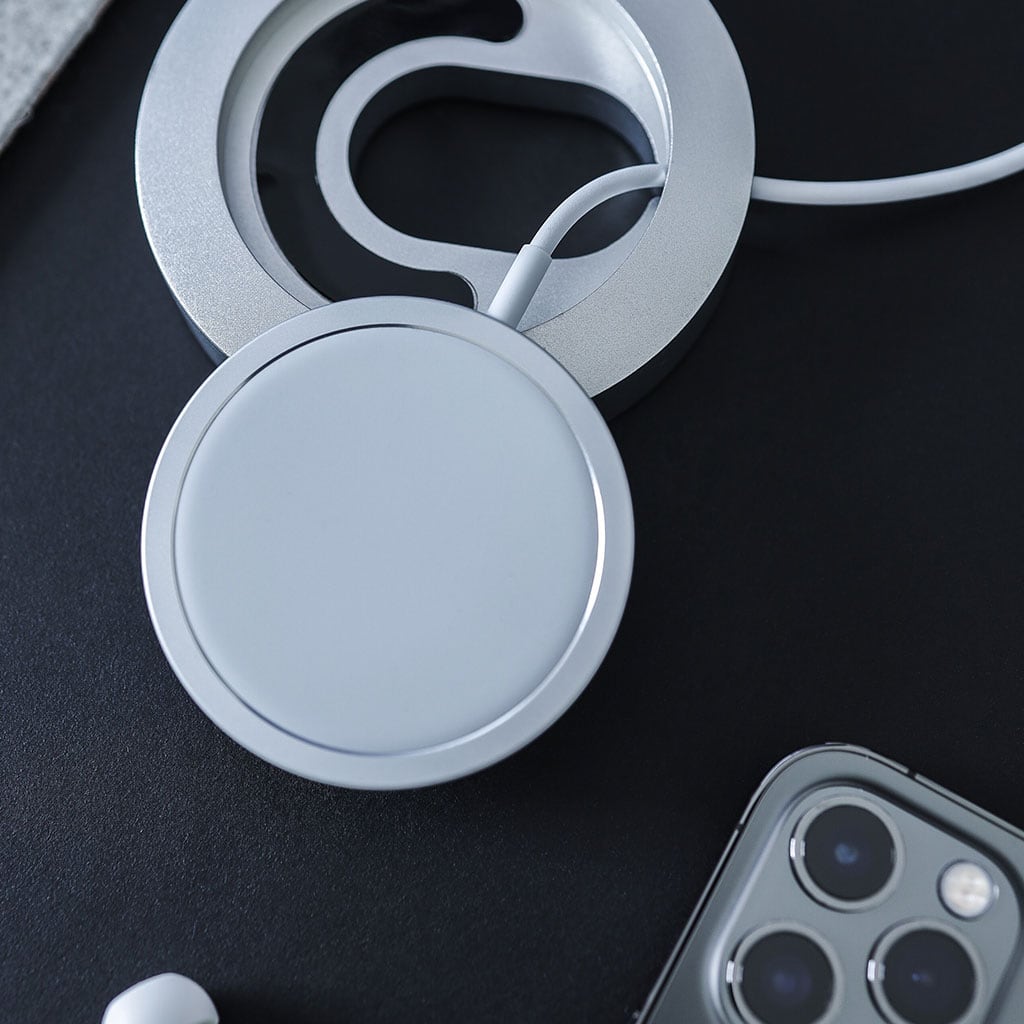Does Magsafe work on iPad?
Does Magsafe work on iPad?
Exploring the expanding realm of Apple’s innovative MagSafe technology prompts curiosity about its compatibility and functionality across the spectrum of Apple devices. Among the inquisitive inquiries arises the question: Does MagSafe work with the versatile and widely-used iPad?
Unlock the magic of Magsafe and discover its compatibility with your iPad!
The direct integration of MagSafe technology, as seen in the iPhone 12 series, isn’t present in iPads. MagSafe, primarily introduced for iPhones, involves a ring of magnets in the back of the device that facilitates wireless charging and easy attachment of compatible accessories. iPads, however, do not have this specific MagSafe array or connector built into their design.
Although iPads lack a dedicated MagSafe feature, some third-party accessories may offer MagSafe-like functionality for certain iPad models. Some accessory manufacturers have developed MagSafe-compatible wireless chargers or adapters that can work with iPads to provide wireless charging capabilities. However, the effectiveness and compatibility may vary due to differences in magnetic configurations, power requirements, and the absence of a dedicated MagSafe setup in iPads.
Apple has implemented magnetic features in iPads, especially in the iPad Pro models, such as the magnetic connector at the back designed primarily for the Apple Pencil or specific accessories like the Magic Keyboard. While these magnets provide stability and convenience for attaching accessories, they don’t replicate the full scope of MagSafe technology found in iPhones.
If users seek MagSafe-like functionalities for their iPads, it’s essential to research and select third-party accessories explicitly marketed as MagSafe-compatible for iPads. These accessories might offer varying levels of magnetic attachment or wireless charging convenience, but they won’t replicate the exact functionality or experience provided by the MagSafe system in iPhones. Checking compatibility and reliability before purchasing third-party MagSafe-related accessories for iPads is crucial to ensure they meet the intended requirements.
How does the lack of MagSafe affect iPad compatibility with accessories?
The absence of a dedicated MagSafe array or connector in iPads significantly impacts their compatibility with MagSafe accessories, particularly those designed specifically for MagSafe-enabled devices like the iPhone 12 series. MagSafe chargers and other accessories rely on the circular arrangement of magnets embedded in the back of MagSafe-compatible devices to ensure a secure attachment and efficient wireless charging. As iPads lack this MagSafe tech integration, their physical design does not incorporate the necessary magnetic array or connector that ensures seamless compatibility with MagSafe accessories, even those designed for wireless charging.
Although MagSafe chargers and certain MagSafe accessories might possess the capability to charge devices through the Qi wireless charging standard, which many iPads support, the absence of the MagSafe tech in iPads limits the effectiveness and efficiency of such accessories. Users might be able to charge their iPads using MagSafe wireless charging pads or power banks that support Qi charging, but they may not experience the same level of magnetic attachment or the full suite of functionalities that MagSafe offers on compatible models like the iPhone 12 series. Additionally, MagSafe cases or other accessories designed explicitly for MagSafe-enabled iPhones may not align correctly or attach securely to iPads due to the lack of the MagSafe-compatible infrastructure in the iPad’s design, including the absence of a circular magnetic array or connector and the differences in physical dimensions between iPhones and iPads.
In essence, while some MagSafe accessories may provide a degree of functionality, like wireless charging capabilities, through the Qi standard on iPads with USB-C ports, the absence of the specific MagSafe technology integration severely limits the seamless compatibility and intended functionalities of MagSafe accessories with iPads. Compatibility might exist on a basic level, but the comprehensive experience and seamless attachment associated with MagSafe-enabled devices are not fully replicated on iPads.
What features are missing from the MagSafe system in iPads?
The MagSafe system introduced with iPhones offers several functionalities that are not present in iPads due to the absence of dedicated MagSafe technology integration. One of the primary functionalities absent in iPads is the seamless and efficient wireless charging experience offered by MagSafe chargers on compatible iPhones. MagSafe-enabled iPhones feature a circular arrangement of magnets that ensures precise alignment and strong attachment to MagSafe-compatible chargers, providing a reliable and rapid wireless charging experience. However, iPads lack this specific MagSafe array or connector, limiting their ability to enjoy the same level of wireless charging convenience and efficiency. While iPads support wireless charging through Qi-compatible chargers, the MagSafe’s precise alignment and rapid charging capabilities are not replicated due to the absence of dedicated MagSafe tech in iPads.
Moreover, the easy attachment of MagSafe accessories is another functionality absent in iPads. MagSafe accessories, such as cases or wallets, are designed to easily attach to and align with MagSafe-enabled iPhones, thanks to the magnets and the circular array present in the device. This allows for a seamless attachment and provides users with a range of compatible MagSafe accessories designed specifically for iPhones. However, the lack of the required MagSafe technology infrastructure in iPads means they don’t offer the same level of compatibility or the effortless attachment of MagSafe accessories designed for iPhones. While certain third-party accessories may attempt to replicate some functionalities, iPads do not support MagSafe accessories in the same manner or with the same ease as MagSafe-enabled iPhones due to the absence of the dedicated MagSafe tech.





You must be logged in to post a comment.